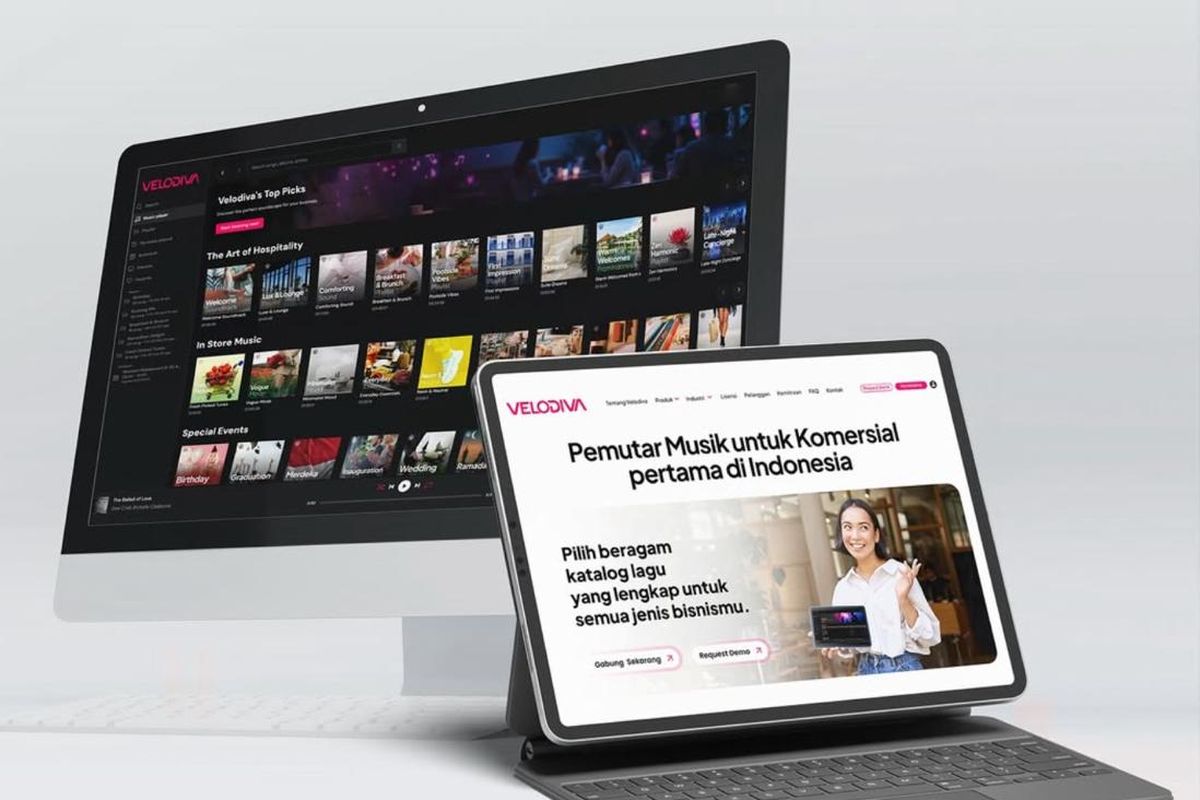Reyhan Ariq Syahalam 👋
Technical Product & IT Project Manager with cross-functional leadership across product, UX, and delivery. 4+ years building apps, games, and data-driven systems in edu-tech and enterprise.

Technical Product & IT Project Manager with cross-functional leadership across product, UX, and delivery. 4+ years building apps, games, and data-driven systems in edu-tech and enterprise.

In Indonesia, most cafés, gyms, and retail stores blast playlists from Spotify or YouTube Music. It feels harmless, but behind the scenes, it cheats artists out of the royalties they deserve. Velodiva wanted to solve this injustice with two bold products: a licensed music player for public spaces and a royalty management system to track and distribute payments fairly.
It was an inspiring mission—give creators what they are owed, while helping businesses stay compliant. But inside the company, the product team was hanging by a thread.
When I stepped in, Velodiva’s product development looked like a jam session gone wrong. There was no sheet music. Tasks were dropped in Discord chats, priorities shifted without warning, and the CEO himself had to chase developers to know what was happening. Developers felt scattered and frustrated; nobody knew the bigger picture.
Imagine a team of eleven talented musicians, each playing their instrument beautifully—yet all in different keys. That was the situation.
The CEO carried the vision, determined to make Velodiva a household name in licensed music. The developers wanted to build but were exhausted by constant context switching. Downstream, business owners were waiting for a product they could trust, while artists depended on royalties to make their living. Everyone had something at stake, but without structure, the mission risked collapsing.
The problem wasn’t technology—it was disorder. There was no roadmap, no backlog, no release cadence. Developers were drowning in surprise requests. The CEO, though visionary, lacked a single point of truth. Deadlines kept slipping. If nothing changed, the product could miss its launch window, and the entire mission to make music fairer might never see daylight.
The fix wasn’t glamorous—it was discipline. I restructured the team into smaller functional squads: front-end, back-end, and mobile, with UX, QA, DevOps, and solution architects grouped as a support unit. Everyone now had a home and clear ownership.
Then came process. I introduced Agile ceremonies: sprint planning every Monday, daily standups, and Friday reviews. We moved everything into ClickUp, where I rebuilt the backlog from scratch. Features became epics, then tasks, then micro-tasks that could be finished in under four hours. Suddenly, progress was visible, workloads were balanced, and conversations shifted from “who’s doing this?” to “when’s the demo?”
Most importantly, I became the single bridge to the CEO. No more surprise pings in Discord. Every request flowed into the backlog, every update was packaged in a weekly report. The developers could breathe, and the CEO finally had clarity without micromanaging.
Four weeks in, the team hit its first real milestone: a feature demo delivered exactly on schedule. It was the first time Velodiva’s leadership had seen predictability from the team. That moment changed everything—the CEO started trusting the system, and developers started trusting the process. For me, it was the turning point where chaos began to transform into rhythm.
Within months, Velodiva Music Player and the Royalty Management System launched successfully. The music player was adopted in over 100 business locations across Indonesia, becoming the legal backbone for public music playback. Release cycles shifted from erratic “on-demand” drops to predictable monthly cadences. Developers felt more motivated and focused, while the CEO gained peace of mind knowing progress was under control.
Velodiva taught me a truth I’ve carried into every project since: talent without structure cannot scale. I wasn’t the strategist defining royalties or business models—that was the CEO’s domain. My role was to make sure the vision didn’t drown in chaos. By introducing structure, discipline, and a single source of truth, I helped turn a fragile project into a functioning, scalable system.
If I could do it again, I’d push for earlier stakeholder workshops before setting up sprints, to align business priorities even faster. But the core lesson stands: sometimes the most impactful work isn’t flashy—it’s giving talented people the rhythm they need to shine.



